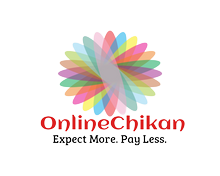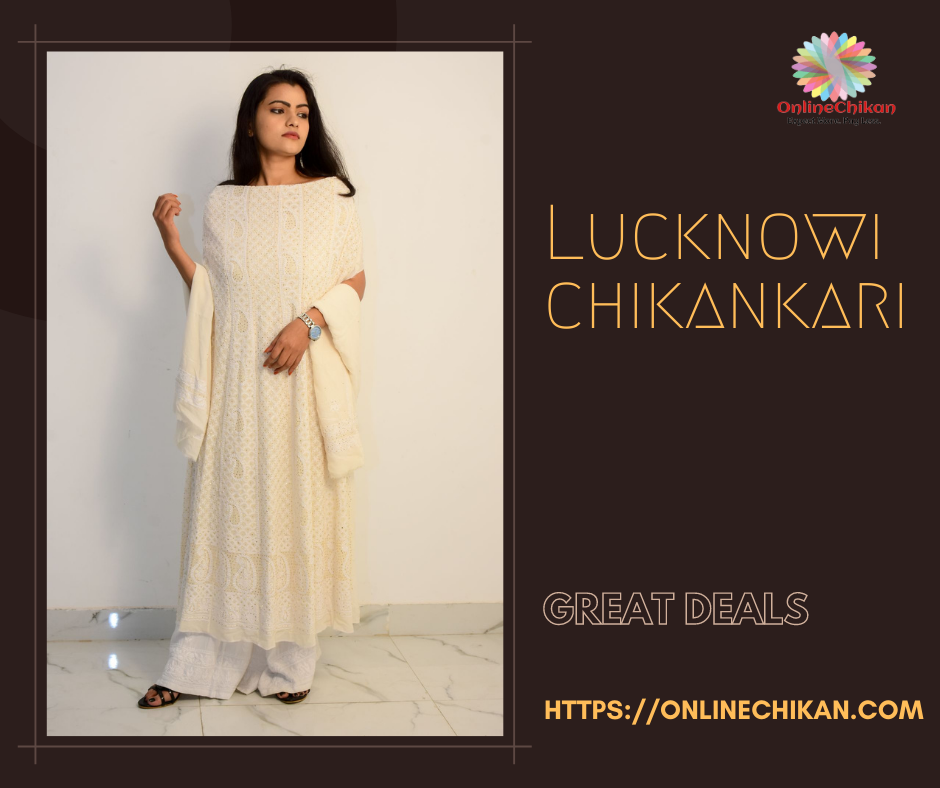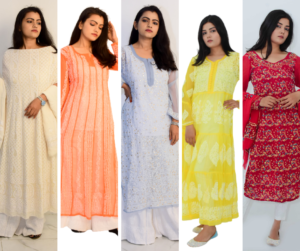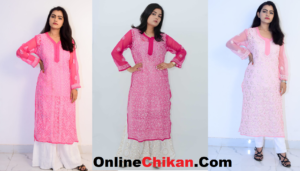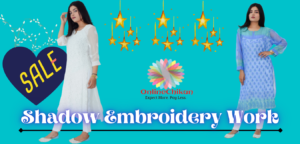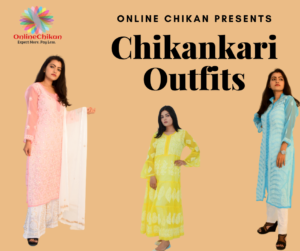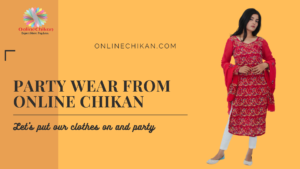Lucknow is the place of nawabs and since the ancient times, the Lucknow Chikankari has been in trend.
Because no matter what fashion statement comes in and goes out, the Lucknow Chikankari will stay forever in trend.
And in the era of the digital world, you can buy Lucknow Chikankari from anywhere and at any time.
There are various online stores available on the internet that you just search for any kind of Lucknow Chikankari dress material, kurta, saree or any apparel, that material will be available.
Lucknow Chikankari History and Origin
Indian chikan employment has been documented as far back as the mid-third century BC, with one narrative recalling the experience of a voyager who imparted chikan to a worker in exchange for drinking water.
However, according to historical records, the most well-known and verifiable myth is that Noor Jahan, the wife of Mughal ruler Jehangir, brought Persian craftsmanship to India in the seventeenth century.
Finally, once all was said and done, she was a gifted embroiderer with a special affection for her creations.
As for her better half, she is claimed to have appreciated chikan work as well, and she has set up many workshops to help this creative expression flourish in India.
Some time ago, the weaving structure was started as a white-on-white weaving structure. The texture leaned toward muslin or mulmul since it was the most appropriate material for the warm, slightly sticky atmosphere.
Following the fall of the Mughal Empire, Chikankari artisans moved across India, although Lucknow remained the most important center, with Awadh a close second in terms of population.
Exclusive Lucknow Chikankari Features
In the world of Lucknow Chikankari work, the join is one of the most distinguishing characteristics.
Every tiny attach is completed beautifully, and the overall tidiness of the job is difficult to find elsewhere.
The delicate and well-done hand weaving lends the item of apparel an appearance of richness and ability, which is mostly what you are paying for in the first place.
Colours of Chikankari
No matter what color Chikankari you see people wearing. All of them will mesmerize your eyes that you would wish to wear the same because colors are the only thing which makes your appearance more special and vibrant. In the following context, we are talking about the colors of Chikankari.
Lucknow Chikankari Colours
Beginning as a simple white-on-white weaving technique on muslin cloth, modern Chikankari has evolved to include the use of shadings and other color variations.
Many believe that the transformation is due to a shift in cutting-edge fashion, supported by the unique all-white clothing worn by the model.
While white is the predominant color for the pants, expect to see vibrant and silk threads following the themes, making each item of apparel more versatile in nature.
Themes
Botanical examples and Chikankari are inextricably linked together. Floral arrangements have always incorporated blooms, stalks, buti, and leaves as finishing touches, thanks to the strong influence of the Persian culture on them.
Different themes involve embellishments like Mukaish, Kamdani, Badla, sequin, dab, and mirror work, all of which contribute to the overall appearance of the work by making it seem more abundant.
Chikankari from Lucknow: The current state of the art
Lucknow’s chikan weaving is well-known among the general people. Aside from being a standard, go-to clothing item for most formal social occasions and festivals, the craftsmanship has also traced its roots back to the Indian inclination and allure world.
One of its earliest and most notable appearances on the Bollywood screen was in the Indian film Anjuman, which starred Shabana Azmi and Farooq Shaikh and was released in 2001.
The film is set in Lucknow, and it deals with problems such as double-dealing by women and the difficulties that the local chikan weaving employees confront.
India’s traditional artists, Abu Jani and Sandeep Khosla have dedicated their lives to invigorating the situation with traditional artworks in India, and Chikankari has remained their speciality. In 2004, actress Judi Dench, who starred in the James Bond films, wore one of their grand manifestations while receiving an Academy Award.
Another example of openness in Hollywood is the inclusion of pop phenomenon Madonna, who appears in her film The Next Big Thing wearing a Chikankari-woven item of apparel. It is estimated that 2.5 lakh artisans are working in the chikankari.
Technique
Chikankari is the term used to describe creating a chikan piece. Intricate and deftly done hand weaving on various material textures such as muslin, silk, chiffon, organza, net and so on is what chikan is all about.
Light muslin and cotton pieces of clothing are woven with white thread in cool, pastel colours to create a modern look.
These days, chikan weaving is also completed with coloured and silk threads in various tones to match the current fashion and keep up with the newest trends. Lucknow is the epicentre of the Chikankari industry today, and the collection known as Lucknawi chikan is the result of this concentration.
Chikan work has recently included additional decorations like Mukaish, Kamdani, Badla, sequin, dab, and mirror work, which gives it a more luxurious appearance.
Chikan weaving is most often done on lightweight fabrics such as cotton, semi-Georgette, pure Georgette, crepe, chiffon, silk, and any other light fabric and includes the weaving. Otherwise, the weaving needle would not penetrate the texture due to its extreme thickness or hardness.
The piece begins with at least one example obstruct used to prevent printing an example on the ground texture from being successful.
The embroiderer follows along with the sample, and the finished item is meticulously cleaned to ensure that no traces of the printed pattern remain.
Price Range And How to Identify Chikankari?
Depending on the style, a simple kurta or a pair of palazzo pants might cost you anywhere between Rs.1200 and Rs.5000.
Be cautious when purchasing less costly versions between Rs.200 and Rs.500 since they are often created using machines and do not have the precision and tidiness that hand-weaving provides.
One of the most important characteristics to notice is the neatness of the job. Before it is ready to be sold, each one-of-a-kind hand-fitted apparel item is thoroughly inspected for correctness and neatness.
Thus, a piece of clothing with uneven stitching, loose threads, and a thicker texture reveals that a machine was used to produce the garment.
Conclusion
A laborious cycle of designing, etching, block printing, weaving, washing, and wrapping results from the accumulation of these activities.
To begin, the texture is diced due to the requirement. Afterward, it is block printed with plan motifs, after which the weaving process is completed.
Afterward, the material is cleaned many times before being ready to use. Visiting Lucknow is an essential must if you want to understand the quality and mystery of all of the dishes served there.
In addition, it features a plethora of historically significant sites that will allow you to experience the true soul of the city.
